#cancer drugs
Photo
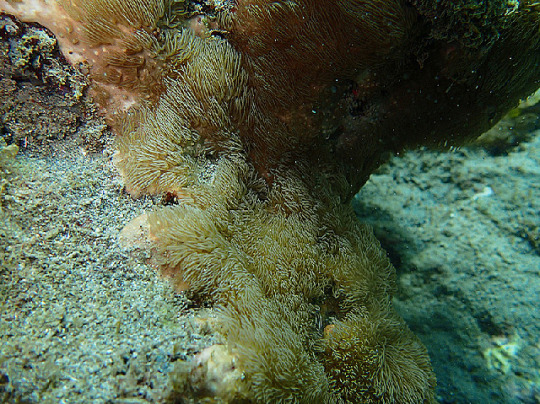
Cancer-crushing Corals
From fluorescent jellyfish proteins to drug-inspiring cone snail toxins, marine animals are a biomedical treasure trove. Soft corals and their relatives, collectively known as octocorals, possess a vast library of particularly promising compounds, diterpenes, currently under investigation as potential drugs. Yet, with little understanding of how they are produced, synthesising them in the laboratory has proved difficult, hindering progress. In a recent breakthrough, researchers identified a cluster of genes involved in the synthesis of eleutherobin, a coral diterpene with potent anti-cancer activity, in the genome of the soft coral Erythropodium caribaeorum (pictured). Unlike in many marine animals, eleutherobin is not produced by a bacterial symbiont, a microbial partner living within the coral, but by the coral itself, and similar genes exist in other octocoral genomes, suggesting that diterpene production is an ancient adaptation. Elucidating this genetic pathway provides key tools for making coral diterpenes, boosting their potential for drug development.
Written by Emmanuelle Briolet
Image by Naturalis Biodiversity Center
Research by Paul D. Scesa, Zhenjian Lin & Eric W. Schmidt, Department of Medicinal Chemistry, University of Utah, Salt Lake City, UT, USA
Image originally published with a Attribution-NonCommercial-ShareAlike 3.0 Unported (CC BY-NC-SA 3.0) license
Research published in Nature Chemical Biology, May 2022
You can also follow BPoD on Instagram, Twitter and Facebook
#science#biomedicine#cancer#cancer drugs#oncology#tumours#drug development#coral#diterpenes#soft coral#marine life#anti-cancer drugs
130 notes
·
View notes
Text
Kidney Cancer Treatment:- Jastinihb 5 Mg Capsule
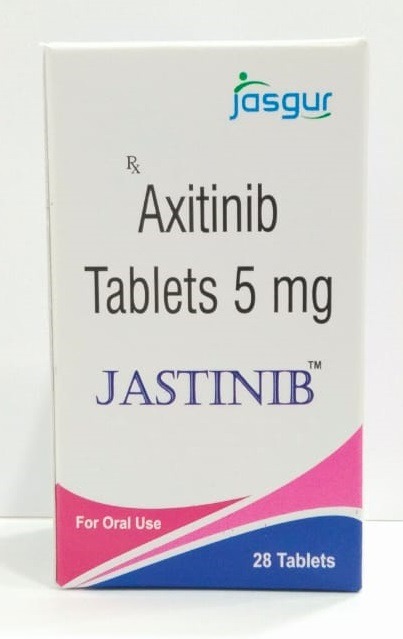
Empower your cancer journey with Jastinib 5 mg capsule from Jasgur Life Sciences. Designed to inhibit VEGF receptors, this innovative medication holds promise for patients battling advanced renal cell carcinoma. With Jastinib, embrace a brighter future and reclaim control over your health.
#cancer medicines#cancer cure#kidney cancer treatment#jasgur life sciences#Cancer drugs#Axitinib 5 mg#Jastinib 5 mg capsule#Cancer tablets#Anti kidney cancer drugs#Jastinib 5 mg#Jastinib#Axitinib 5 mg capsule
0 notes
Text
A Sprayable Gel Could Make Minimally Invasive Surgeries Simpler And Safer - Technology Org
New Post has been published on https://thedigitalinsider.com/a-sprayable-gel-could-make-minimally-invasive-surgeries-simpler-and-safer-technology-org/
A Sprayable Gel Could Make Minimally Invasive Surgeries Simpler And Safer - Technology Org
More than 20 million Americans undergo colonoscopy screenings every year, and in many of those cases, doctors end up removing polyps that are 2 cm or larger and require additional care. This procedure has greatly reduced the overall incidence of colon cancer, but not without complications, as patients may experience gastrointestinal bleeding both during and after the procedure.
Researchers at MIT have developed a new gel, GastroShield, that can be sprayed onto the surgical sites via catheter, through an endoscope, pictured. This gel forms a tough but flexible protective layer that controls and prevents delayed bleeding and mechanically reinforces the tissue, sealing up perforations that might appear after the polyp is removed and enabling wound healing to occur. Illustration by the researchers / MIT
In hopes of preventing those complications from occurring, researchers at MIT have developed a new gel, GastroShield, that can be sprayed onto the surgical sites through an endoscope. This gel forms a tough but flexible protective layer that serves as a shield for the damaged area. The material prevents delayed bleeding and reinforces the mechanical integrity of the tissue.
“Our tissue-responsive adhesive technology is engineered to interact with the tissue via complimentary covalent and ionic interactions as well as physical interactions to provide prolonged lesion protection over days to prevent complications following polyp removal, and other wounds at risk of bleeding across the gastrointestinal tract,” says Natalie Artzi, a principal research scientist in MIT’s Institute for Medical Engineering and Science, an associate professor of medicine at Harvard Medical School, and the senior author of the paper.
In an animal study, the researchers showed that the GastroShield application integrates seamlessly with current endoscopic procedures, and provides wound protection for three to seven days where it helps tissue to heal following surgery. Artzi and other members of the research team have started a company called BioDevek that now plans to further develop the material for use in humans.
Gonzalo Muñoz Taboada, CEO of BioDevek, and Daniel Dahis, lead scientist at BioDevek, are the lead authors of the study, which appears in the journal Advanced Materials. Elazer Edelman, the Edward J. Poitras Professor in Medical Engineering and Science at MIT and the director of IMES, and Pere Dosta, a former postdoc in Artzi’s lab, are also authors of the paper.
Adhesive gels
Routine colon cancer screenings often reveal small precancerous polyps, which can be removed before they become cancerous. This is usually done using an endoscope. If any bleeding occurs during the polyp removal, doctors can cauterize the wound to seal it, but this method creates a scar that may delay the healing, and result in additional complications.
Additionally, in some patients, bleeding doesn’t occur until a few days after the procedure. This can be dangerous and may require patients to return to the hospital for additional treatment. Other patients may develop small tears that lead the intestinal contents to leak into the abdomen, which can lead to severe infection and requires emergency care.
When tissue reinforcement is required, doctors often insert metal clips to hold tissue together, but these can’t be used with larger polyps and aren’t always effective. Efforts to develop a gel that could seal the surgical wounds have not been successful, mainly because the materials could not adhere to the surgical site for more than 24 hours.
The MIT team tested dozens of combinations of materials that they thought could have the right properties for this use. They wanted to find formulations that would display a low enough viscosity to be easily delivered and sprayed through a nozzle at the end of a catheter that fits inside commercial endoscopes. Simultaneously, upon tissue contact, this formulation should instantly form a tough gel that adheres strongly to the tissue. They also wanted the gel to be flexible enough that it could withstand the forces generated by the peristaltic movements of the digestive tract and the food flowing by.
The researchers came up with a winning combination that includes a polymer called pluronic, which is a type of block copolymer that can self-assemble into spheres called micelles. The ends of these polymers contain multiple amine groups, which end up on the surface of the micelles. The second component of the gel is oxidized dextran, a polysaccharide that can form strong but reversible bonds with the amine groups of the pluronic micelles.
When sprayed, these materials instantly react with each other and with the lining of the gastrointestinal tract, forming a solid gel in less than five seconds. The micelles that make up the gel are “self-healing” and can absorb forces that they encounter from peristaltic movements and food moving along the digestive tract, by temporarily breaking apart and then re-assembling.
“To obtain a material that adheres to the design criteria and can be delivered through existing colonoscopes, we screened through libraries of materials to understand how different parameters affect gelation, adhesion, retention, and compatibility,” Artzi says.
A protective layer
The gel can also withstand the low pH and enzymatic activity in the digestive tract, and protect tissue from that harsh environment while it heals itself, underscoring its potential for use in other gastrointestinal wounds at high risk of bleeding, such as stomach ulcers, which affect more than 4 million Americans every year.
In tests in animals, the researchers found that every animal treated with the new gel showed rapid sealing, and there were no perforations, leakages, or bleeding in the week following the treatment. The material lasted for about five days, after which it was sloughed off along with the top layer of tissue as the surgical wounds healed.
The researchers also performed several biocompatibility studies and found that the gel did not cause any adverse effects.
“A key feature of this new technology is our aim to make it translational. GastroShield was designed to be stored in liquid form in a ready-to-use kit. Additionally, it doesn’t require any activation, light, or trigger solution to form the gel, aiming to make endoscopic use easy and fast,” says Muñoz, who is currently leading the translational effort for GastroShield.
BioDevek is now working on further developing the material for possible use in patients. In addition to its potential use in colonoscopies, this gel could also be useful for treating stomach ulcers and inflammatory conditions such as Crohn’s disease, or for delivering cancer drugs, Artzi says.
The research was funded, in part, by the National Science Foundation.
Written by Anne Trafton
Source: Massachusetts Institute of Technology
You can offer your link to a page which is relevant to the topic of this post.
#adhesion#advanced materials#Animals#Biotechnology news#bleeding#Cancer#cancer drugs#CEO#colon cancer#colonoscopy#Delay#Design#Developments#Disease#display#drugs#easy#effects#engineering#Environment#Featured life sciences news#Food#form#Forms#Foundation#healing#Health & medicine news#how#humans#illustration
0 notes
Text
The reason we need a simplified way of drawing three-dimensional structures becomes apparent when we have to represent very complicated organic molecules such as Taxol® (figure 17.18).
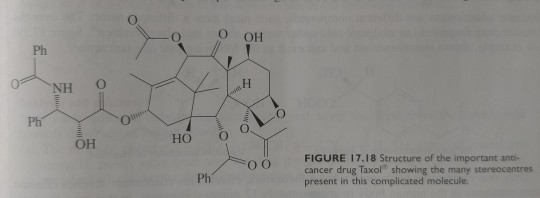
"Chemistry" 2e - Blackman, A., Bottle, S., Schmid, S., Mocerino, M., Wille, U.
#book quotes#chemistry#nonfiction#textbook#cancer drugs#cancer treatment#organic chemistry#taxol#complicated
1 note
·
View note
Text

youtube
#tv show#global news#world news#cancer#cancer survival#hope#faith#children#family#cancer drugs#stem cell treatment#stem cell transplant#stem cell injection#stem cell therapy#true story#youtube#hospitallife#chemotherapy#chemosorptive
0 notes
Text
house md’s worst and best hate crime is wilson’s “i should have spent my life being more like you. i should’ve been a manipulative, self centred, narcissistic ass who brought misery to everything and everyone in his life” followed by house’s “you’d still have cancer” and then wilson’s “yeah, but at least i’d feel like i deserved it!” house risks his entire life to let wilson do too much chemo. wilson didn’t even ask him to do it. house gives up the last of his vicodin to stop wilson’s pain. he lies to wilson about it. house tells wilson that all they need in life is each other. house promises to let wilson die in his apartment instead of being taken to a hospital. he risks everything because wilson asks him to. then wilson tells house that he deserves cancer. there is no fucking reason for this. it’s the best thing they ever did.
#this is absolutely the ultimate hate crime#nothing makes me happier than unnecessary violence#there’s just something about it#house md#hilson#hate crimes md#cancer mention#drug mention#house md spoilers#+
9K notes
·
View notes
Text
"GoMedsOnline: Your Trusted Destination for Cancer Medicines in India - Find Imported & Affordable Anti-Cancer Drugs"
GoMedsOnline is a leading online platform for medical supplies in India. They offer a wide range of cancer medicines, including imported and affordable anti-cancer drugs. With GoMeds, you can find the best price for the cancer medicine you need, without worrying about the product's quality. All of the medicines available on GoMedsOnline are genuine and reliable, ensuring that you receive the best possible treatment for your condition. Whether you're in need of a specific cancer drug or simply want to explore the options available to you, GoMedsOnline is the perfect place to start. Browse their extensive selection of cancer medicines today and find the right treatment for you.
#gomeds#go meds#gomeds online#gomedsonline#go meds online#price in india#medicine available in india#cancer medicine#imported drugs#Cancer drugs#Anti cancer medicine.
1 note
·
View note
Text
Advanced Kidney Cancer Drug Lenvabuzz 10 Mg
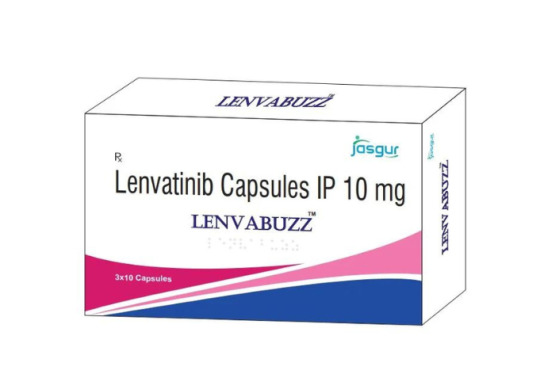
Lenvabuzz 10 mg Capsules by Jasgur Life Sciences: Engineered to combat cancer at its core, Lenvabuzz 10 mg capsules by Jasgur Life Sciences offer a ray of hope to patients grappling with aggressive malignancies. Through its potent inhibition of vascular endothelial growth factor (VEGF) receptors, Lenvabuzz disrupts tumor angiogenesis, halting disease progression and enhancing patient outcomes. With its well-established safety profile and promising clinical efficacy in metastatic renal cell carcinoma and unresectable hepatocellular carcinoma, Lenvabuzz emerges as a beacon of progress in the field of oncology.
#anti cancer drugs#cancer cure#cancer treatment#cancer drugs#lenvabuzz 10 mg#Lenvatinib 10 mg#lenvima 10 mg#lenvatinib 10 mg capsules#Lenvabuzz#Lenvabuzz 10 mg capsules#jasgur life sciences
0 notes
Text
A sprayable gel could make minimally invasive surgeries simpler and safer
New Post has been published on https://thedigitalinsider.com/a-sprayable-gel-could-make-minimally-invasive-surgeries-simpler-and-safer/
A sprayable gel could make minimally invasive surgeries simpler and safer
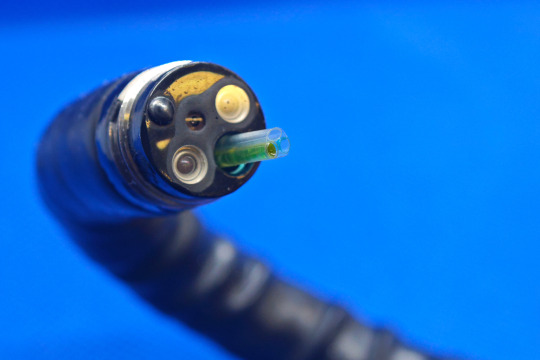

More than 20 million Americans undergo colonoscopy screenings every year, and in many of those cases, doctors end up removing polyps that are 2 cm or larger and require additional care. This procedure has greatly reduced the overall incidence of colon cancer, but not without complications, as patients may experience gastrointestinal bleeding both during and after the procedure.
In hopes of preventing those complications from occurring, researchers at MIT have developed a new gel, GastroShield, that can be sprayed onto the surgical sites through an endoscope. This gel forms a tough but flexible protective layer that serves as a shield for the damaged area. The material prevents delayed bleeding and reinforces the mechanical integrity of the tissue.
“Our tissue-responsive adhesive technology is engineered to interact with the tissue via complimentary covalent and ionic interactions as well as physical interactions to provide prolonged lesion protection over days to prevent complications following polyp removal, and other wounds at risk of bleeding across the gastrointestinal tract,” says Natalie Artzi, a principal research scientist in MIT’s Institute for Medical Engineering and Science, an associate professor of medicine at Harvard Medical School, and the senior author of the paper.
In an animal study, the researchers showed that the GastroShield application integrates seamlessly with current endoscopic procedures, and provides wound protection for three to seven days where it helps tissue to heal following surgery. Artzi and other members of the research team have started a company called BioDevek that now plans to further develop the material for use in humans.
Gonzalo Muñoz Taboada, CEO of BioDevek, and Daniel Dahis, lead scientist at BioDevek, are the lead authors of the study, which appears in the journal Advanced Materials. Elazer Edelman, the Edward J. Poitras Professor in Medical Engineering and Science at MIT and the director of IMES, and Pere Dosta, a former postdoc in Artzi’s lab, are also authors of the paper.
Adhesive gels
Routine colon cancer screenings often reveal small precancerous polyps, which can be removed before they become cancerous. This is usually done using an endoscope. If any bleeding occurs during the polyp removal, doctors can cauterize the wound to seal it, but this method creates a scar that may delay the healing, and result in additional complications.
Additionally, in some patients, bleeding doesn’t occur until a few days after the procedure. This can be dangerous and may require patients to return to the hospital for additional treatment. Other patients may develop small tears that lead the intestinal contents to leak into the abdomen, which can lead to severe infection and requires emergency care.
When tissue reinforcement is required, doctors often insert metal clips to hold tissue together, but these can’t be used with larger polyps and aren’t always effective. Efforts to develop a gel that could seal the surgical wounds have not been successful, mainly because the materials could not adhere to the surgical site for more than 24 hours.
The MIT team tested dozens of combinations of materials that they thought could have the right properties for this use. They wanted to find formulations that would display a low enough viscosity to be easily delivered and sprayed through a nozzle at the end of a catheter that fits inside commercial endoscopes. Simultaneously, upon tissue contact, this formulation should instantly form a tough gel that adheres strongly to the tissue. They also wanted the gel to be flexible enough that it could withstand the forces generated by the peristaltic movements of the digestive tract and the food flowing by.
The researchers came up with a winning combination that includes a polymer called pluronic, which is a type of block copolymer that can self-assemble into spheres called micelles. The ends of these polymers contain multiple amine groups, which end up on the surface of the micelles. The second component of the gel is oxidized dextran, a polysaccharide that can form strong but reversible bonds with the amine groups of the pluronic micelles.
When sprayed, these materials instantly react with each other and with the lining of the gastrointestinal tract, forming a solid gel in less than five seconds. The micelles that make up the gel are “self-healing” and can absorb forces that they encounter from peristaltic movements and food moving along the digestive tract, by temporarily breaking apart and then re-assembling.
“To obtain a material that adheres to the design criteria and can be delivered through existing colonoscopes, we screened through libraries of materials to understand how different parameters affect gelation, adhesion, retention, and compatibility,” Artzi says.
A protective layer
The gel can also withstand the low pH and enzymatic activity in the digestive tract, and protect tissue from that harsh environment while it heals itself, underscoring its potential for use in other gastrointestinal wounds at high risk of bleeding, such as stomach ulcers, which affect more than 4 million Americans every year.
In tests in animals, the researchers found that every animal treated with the new gel showed rapid sealing, and there were no perforations, leakages, or bleeding in the week following the treatment. The material lasted for about five days, after which it was sloughed off along with the top layer of tissue as the surgical wounds healed.
The researchers also performed several biocompatibility studies and found that the gel did not cause any adverse effects.
“A key feature of this new technology is our aim to make it translational. GastroShield was designed to be stored in liquid form in a ready-to-use kit. Additionally, it doesn’t require any activation, light, or trigger solution to form the gel, aiming to make endoscopic use easy and fast,” says Muñoz, who is currently leading the translational effort for GastroShield.
BioDevek is now working on further developing the material for possible use in patients. In addition to its potential use in colonoscopies, this gel could also be useful for treating stomach ulcers and inflammatory conditions such as Crohn’s disease, or for delivering cancer drugs, Artzi says.
The research was funded, in part, by the National Science Foundation.
#adhesion#advanced materials#Animals#bleeding#Cancer#cancer drugs#CEO#colon cancer#colonoscopy#Delay#Design#Disease#display#drugs#easy#effects#engineering#Environment#Food#form#Forms#Foundation#healing#Health care#how#humans#infection#Institute for Medical Engineering and Science (IMES)#Invention#it
0 notes
Text
Some of these probably fuse together and remodel themselves to form the large central vacuole as the cell matures (see Figure 1.35). (...) Mesophyll cells of the leaf can differentiate into a variety of other cell types under the appropriate environment, and mesophyll is therefore considered a form of parenchyma, a ground tissue with thin primary walls (Figure 1.35A). (...) Young parenchyma cells have multiple small vacuoles, or a reticulated vacuole network (Figure 1.35B), which develops into a large central vacuole. Catharanthus roseus is an interesting case in which both the spongy and palisade mesophyll cells of the plant can differentiate into "special cells", or idioblasts (Figure 1.35C), which contain the important anti-cancer drugs vincristine and vinblastine and are presumably used for defense against herbivory. (...) Calcium oxalate crystals are present in the vacuoles of many species, and may be distributed evenly throughout the leaf or restricted to special cells called idioblasts (see Figure 1.35C).
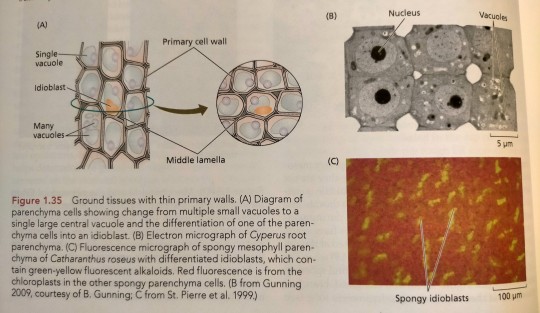
"Plant Physiology and Development" int'l 6e - Taiz, L., Zeiger, E., Møller, I.M., Murphy, A.
#book quotes#plant physiology and development#nonfiction#textbook#cell differentiation#plant cells#defense mechanism#cancer drugs#cyperus
0 notes
Text
#anti cancer#anticancer drugs in india#anticancer drugs#anti cancer drugs#cancer drugs#new cancer medicine#cancer medicine#Anti cancer medicine supplier and distributer in india#best anti cancer medicine in india#Anti cancer drugs manufacturers in India#anti cancer medicine supplier in india#cancer medicine exporter in india#anti cancer medicine exporter in india#anti hiv drugs in supplier and distribution india#anti retroviral treatment#anti viral drugs for hiv supplier#hiv medicine manufacturers in india
0 notes
Text
Cancer Treatments
Cancer drugs make me want to die a little inside. If I wanted to go into oncology, these drugs cured me of that.
Cytotoxic Agents
In general, drink LOTS of fluids
Cyclophosphamide (Cytoxan)
Blocks replication - inhibits DNA/RNA synthesis
The big takeaway with this one is hemorrhagic cystitis - think "Cy" in drug, cy for bladder" (yeah, it's a weak connection)
You need to drink lots of fluid, so take this in the AM so you can pee it all out by the time you go to bed.
Cisplatin (Platinol)
Blocks replication - inhibits DNA/RNA synthesis
This one uses platinum, so think heavy metal poisoning when considering the side effects
#1 drug that causes CI N/V
Nephrotoxic (drink lots of fluids)
Ototoxic (get hearing checked regularly - CN VIII)
Doxorubicin (Adriamycin)
Blocks replication - inhibits DNA/RNA synthesis
Big side effect here will be the red colored secretions - urine, sweat, saliva and tear (think RUBY red- DoxoRUBicin)
This is also cardiotoxic because you have a lifetime dose limit with this drug (think red for the heart)
Vesicant, but this one has an antidote (treat with Dexrazoxane (Zinecard))
Methotrexate
This is the scariest drug of all, according to the teacher. Because apparently the others weren't scary enough.
Inhibits folic acid conversions, which is necessary for cell growth - and this is why most of the side effects occur (humans need folic acid too)
Affects areas where you have rapid cell turnover - mucositis, gastric ulcers, GI perforation
Take in 2-3 L per day
When you think GI, think avoid NSAIDs, penicillin and tetracyclines
You need to give a high dose for cancer treatment, but because of this you need to administer Leucovorin within 24 hrs of treatment or this drug can kill you
Vincristine (Oncovin)
I'll be honest, this was a fun one because a classmate found a meme that encompassed it perfectly. Think Cristine carries a mini bag because her neuropathy can't handle anything else.
This blocks mitosis (blocks cell division)
Always administer in a mini-bag (no IV push)
Fatal if administered intrathecally
Side effects include peripheral neuropathy and constipation
Hormonal Agents
We call these two drugs Tammy and Anastasia because they affect estrogen. Tammy is the younger of the two, so Tamoxifen can be given pre and post menopausal women. But Anastasia is an older name, so she can only get Anastrozole.
Tamoxifen (Saltimox/Nolvadex)
Blocks estrogen receptors
Because of this, think menopause symptoms (hot flashes, fluid retention, menstrual irregularities)
Can be administered for pre or post menopausal women
Anastrozole (Arimidex)
Inhibits aromatase to decrease the production of estrogen
Again, think menopause symptoms (hot flashes, vaginal dryness, musculoskeletal pain, headache)
Only administered for post-menopausal patients
Now we're onto the men. Gonadotropin Releasing Hormone (GnRH) Agents specifically.
Leuprolide (Eligard)
Eli guards his balls. It'll make sense in a minute.
This is a GnRH agonist, so it will suppress testosterone (testicular androgen production)
The goal of this is chemical castration (hence why Eli is guarding his balls)
This can be used to treat endometriosis in women and prostate cancer in men (again, guard your balls)
Side effects are hot flashes, ED, DM, MI, stroke and bone pain
Increased incidence of osteoporosis when used concurrently with bisphosphonates (phosphorus clings to calcium, remember?)
Degarelix (Firmagon)
Just remember, the Firm is Gone. Compliments of a classmate.
This is a GnRH antagonist that reduces the release of LH and FSH
This is used to treat prostate cancer.
Men will get hot flashes with this one, as well as ED (the firm is gone, remember?)
Again, increased incidence of osteoporosis when used concurrently with bisphosphonates (phosphorus clings to calcium, remember?)
I want to die a little inside, I'm so tired. But the above does help. Sometimes you just need to write it out. There are more cancer drugs, but I don't have the capacity to review at this time.
0 notes
Link
0 notes
Text
i like the idea of peter functioning like a service dog on accident because of his senses like. him and tony are just chilling one day and all of a sudden he's like wtf r u ok??? and tony is like ???? and then it turns out he's having a heart attack
#spider-man becomes 20x more threatening when he begins to#literally sniff out drug deals#he is insane#you can't hide#peter parker#irondad#peter being regarded as a psychic because he walks thru a hospital like#u have cancer. u r having a heart attack. u will die in 3 days#this became less service dog and more peter is insane
600 notes
·
View notes
Text
Advanced Kidney Cancer Drug Lenvabuzz 10 Mg
Lenvabuzz 10 mg Capsules by Jasgur Life Sciences: Engineered to combat cancer at its core, Lenvabuzz 10 mg capsules by Jasgur Life Sciences offer a ray of hope to patients grappling with aggressive malignancies. Through its potent inhibition of vascular endothelial growth factor (VEGF) receptors, Lenvabuzz disrupts tumor angiogenesis, halting disease progression and enhancing patient outcomes. With its well-established safety profile and promising clinical efficacy in metastatic renal cell carcinoma and unresectable hepatocellular carcinoma, Lenvabuzz emerges as a beacon of progress in the field of oncology.
#anti cancer drugs#cancer cure#cancer treatment#cancer drugs#lenvabuzz 10 mg#Lenvatinib 10 mg#lenvima 10 mg#lenvatinib 10 mg capsules#Lenvabuzz#Lenvabuzz 10 mg capsules#jasgur life sciences
0 notes